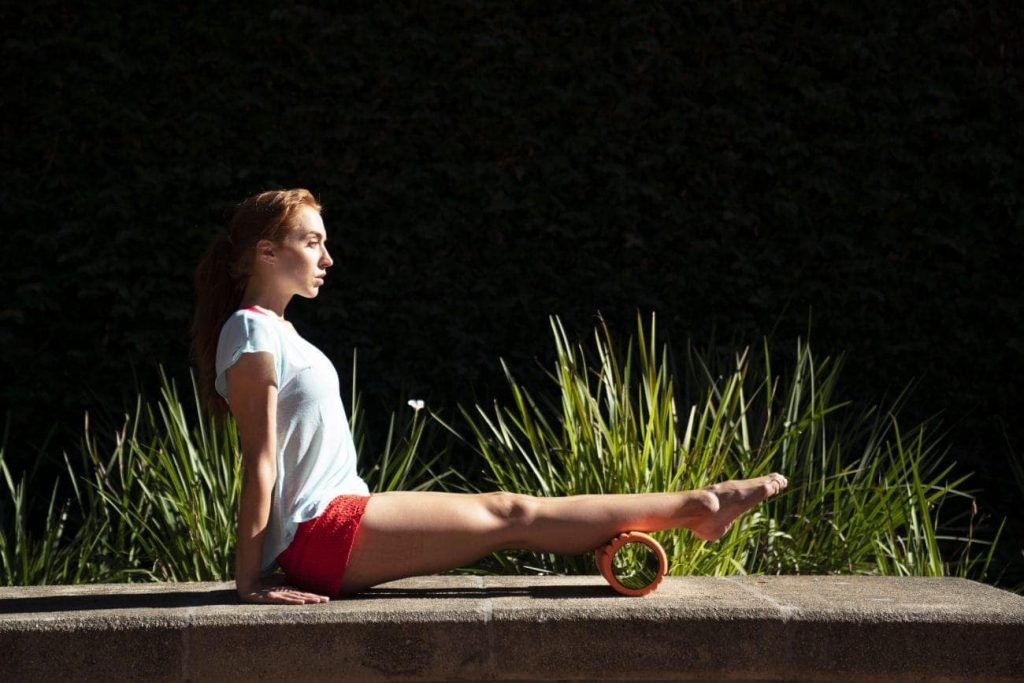Your core is a dynamo. From typing away at your computer to powering through the last kilometre of a (very) long run, all the muscles in your core are working overtime to stabilise your spine, which in turn keeps you stable and upright.
But if your idea of a core workout is crunches at the end of your run, you’ll wreak havoc on your lower back and, ultimately, your running performance.
That’s why you should consider adding Pilates. Every Pilates move targets not only the “six-pack” ab muscles (namely, the rectus abdominis and obliques), but also the glutes and the deep core muscles that support your spine. As a result, you build greater core strength and control, which leads to improved posture and a more efficient running form. In fact, researchers at The Ohio State University found that when runners had weaknesses in the deeper core muscles that support the spine, it led to increased risk of lower back pain over time.
A weak core will also cause you to hunch over, ultimately leading to inefficient running form. “What [hunching over] does is cut off your breathing, and you’re draining energy reserves trying to fight that bad posture,” says Pilates instructor and author of Pilates for Athletes, Sean Vigue. But once you strengthen your core, you’ll have a lot of extra energy because you’re not fighting gravity all day.
WATCH: Try these in-room workouts wherever your travels may take you.
As an added bonus: Pilates has been found to be just as effective as massage therapy in improving pain and functional ability in people with chronic lower back pain, according to a review of 14 studies published in PLOS One.
How to incorporate Pilates into your routine
To strengthen your deep core muscles, do the following Pilates exercises before you head out for your run. “Pilates is so intense and focused, you can do a lot in five to 10 minutes,” Vigue says.
Like dynamic stretching, by doing a quick Pilates sequence before your run – as opposed to saving it for after – you’ll prep your body to perform high-impact exercise.
When you perform these moves, be sure to listen to your body; don’t try to force yourself beyond a comfortable position. And always lead with the breath, Vigue says. “The deep, rhythmic breathing brings a lot of oxygen into the bloodstream, which really helps with running endurance.”
Seated twist
- Begin seated on a mat with your legs extended straight out in front of you and your arms extended straight out to the sides. Keep your shoulders back and down.
- Breathe in through the nose and twist your torso to the right. Pulse your torso to the right two times, making sure to exhale with each pulse.
- Inhale as you return to the starting position and repeat on the other side.
- Perform five on each side for 10 total repetitions. If you can’t keep your legs straight without straining, bend your knees.
The saw
- Begin seated with your legs extended straight out in front of you and your arms extended straight out to the sides. Your legs should be wide so your heels rest on the edges of the mat.
- Inhale to prep, then twist your torso to the right and reach your left hand forward to the outside of your right foot. Pulse your left hand twice above and outside your right foot, making sure to exhale with each pulse.
- Inhale as you return to the starting position and repeat on the other side.
- Do five on each side for a total of 10 reps.
The roll-up
- Begin seated on a mat with your legs extended straight out in front of you, your feet hip-width apart. Extend your arms overhead and inhale to prepare.
- Exhale and hinge forward at the waist. Fold up and over the legs as far as you can without straining, while tucking your chin to your chest. Inhale, then return to the original position.
- Then, exhale, tuck your chin to your chest, and round the upper back as you roll backward slowly until your shoulders are on the mat. Inhale as you lift your arms to the sky and exhale as you peel your back off the mat so you return to the starting position.
- Perform five to 10 repetitions.
Single straight-leg stretch
- Begin lying on the mat with your legs extended straight out in front of you, arms at your sides.
- Extend your right leg to the sky and grab it at the highest point that you can. Lift your left leg a few inches off the ground. Peel your head and shoulders off the mat while engaging your abdominals.
- Then, pulse the right leg toward you twice and bring your nose toward the knee. Exhale with each pulse and try to keep your right leg as straight as possible.
- Inhale and switch legs, bringing the left leg into your hands and your right leg lifted a few inches off the mat. Repeat the two pulses, making sure to exhale with each pulse.
- Perform five on each side for a total of 10 reps.
Pulling the straps
- Begin lying on your stomach with your arms down at your sides and legs squeezed together. Keep your chin slightly tucked throughout the entire movement.
- Raise your arms a few centimetres off the ground, inhale, and sweep your arms out to your sides and bring them forward so they’re in line with your ears. As you sweep your arms, lift your feet a few inches off the ground and open the legs slightly.
- Exhale and retrace your movements until you’re back in the original position.
- Do five to 10 reps.
Pilates push up
- Begin standing with your feet hip-width apart, arms down at your sides, shoulders back and down.
- Inhale to prepare.
- Then, exhale, tuck your chin to your chest, and bend forward at the waist to fold over your legs while keeping your knees soft. Bring your fingertips to the mat and continue exhaling as you walk your hands out into plank position with the shoulders in line with your hands.
- Inhale to prepare, then press forward through the toes and perform one to three pushups with your elbows tucked tight against your ribs. Exhale down, inhale up.
- From the plank position, walk the hands back to toward your feet and rise up slowly until you’re back in standing position.
- Perform five to 10 reps.
Leg pull front
- Begin in plank position with your hands under the shoulders, elbows turned in, and heels pressing back.
- Inhale and lift your right leg as high as possible without lifting your hips.
- Exhale and slowly lower your leg so you’re back in plank.
- Do five to 10 repetitions on each side.

